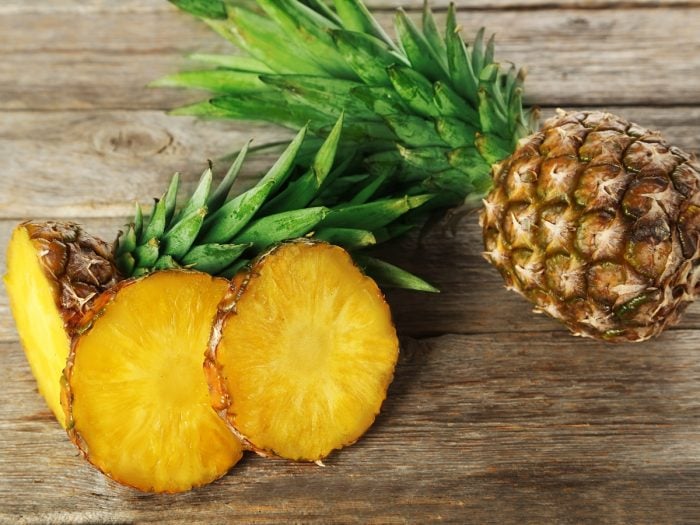Determining whether a pineapple is ripe can be a bit intimidating when you’re standing in the middle of a grocery store. Fortunately, there are a few simple ways to measure whether a pineapple is ready to be eaten.
How to Tell If a Pineapple is Ripe?
Choosing a ripe pineapple doesn’t have to be a struggle, since there are quite a few ways to check for ripeness, such as smelling, squeezing, and weighing this spiky fruit. [1]
Smelling the Pineapple
The first indicator that a pineapple is ripe tends to be the smell. A pineapple that is ready to be sliced and eaten will have a powerful, sweet aroma. In some cases, you will be able to smell a ripe pineapple from across the room. Therefore, in a grocery store, be sure to get up close and personal with your sniff to make sure your specific choice is ripe. [2]

Pineapples have exceptional juiciness and a vibrant tropical flavor. Photo Credit: Shutterstock
Squeezing the Pineapple
You want your pineapple to be firm, and it shouldn’t feel as though the fruit is rotten or overly soft. However, at the gentle pressure from your fingers, the skin should give slightly. A perfect pineapple should have tender, juicy flesh, which a small amount of “give” will indicate.
Appearance
In terms of shape and color, a ripe pineapple should be a golden-yellow color. While some pineapples will remain green even as they ripen, this is less common. The shape of the fruit is also important; you want to find a pineapple with round edges and fully developed eyelets on the outer rind. [3]
Feeling the Weight
Although this measurement is somewhat subjective, you don’t want the pineapple to feel too light. Based on your visual judgment, a good pineapple will feel slightly heavy for its size; this indicates that it is full of juice and fully grown – and also delicious! [4]
Checking the Leaves
The leaves of the pineapple fruit are the final measure of ripeness. The leaves at the crown of the fruit should be sturdy and have a dark green tone. Only the very tips of the leaves should appear to be dried out or brown; this is completely normal. You can also test ripeness by giving the leaves a tug. If they come out when you apply some force, it is likely ripe. If the leaves fall out at a light touch, the fruit may be beginning to rot. On the other hand, if you have to tug hard to remove a leaf, the pineapple is not ripe! [5]
